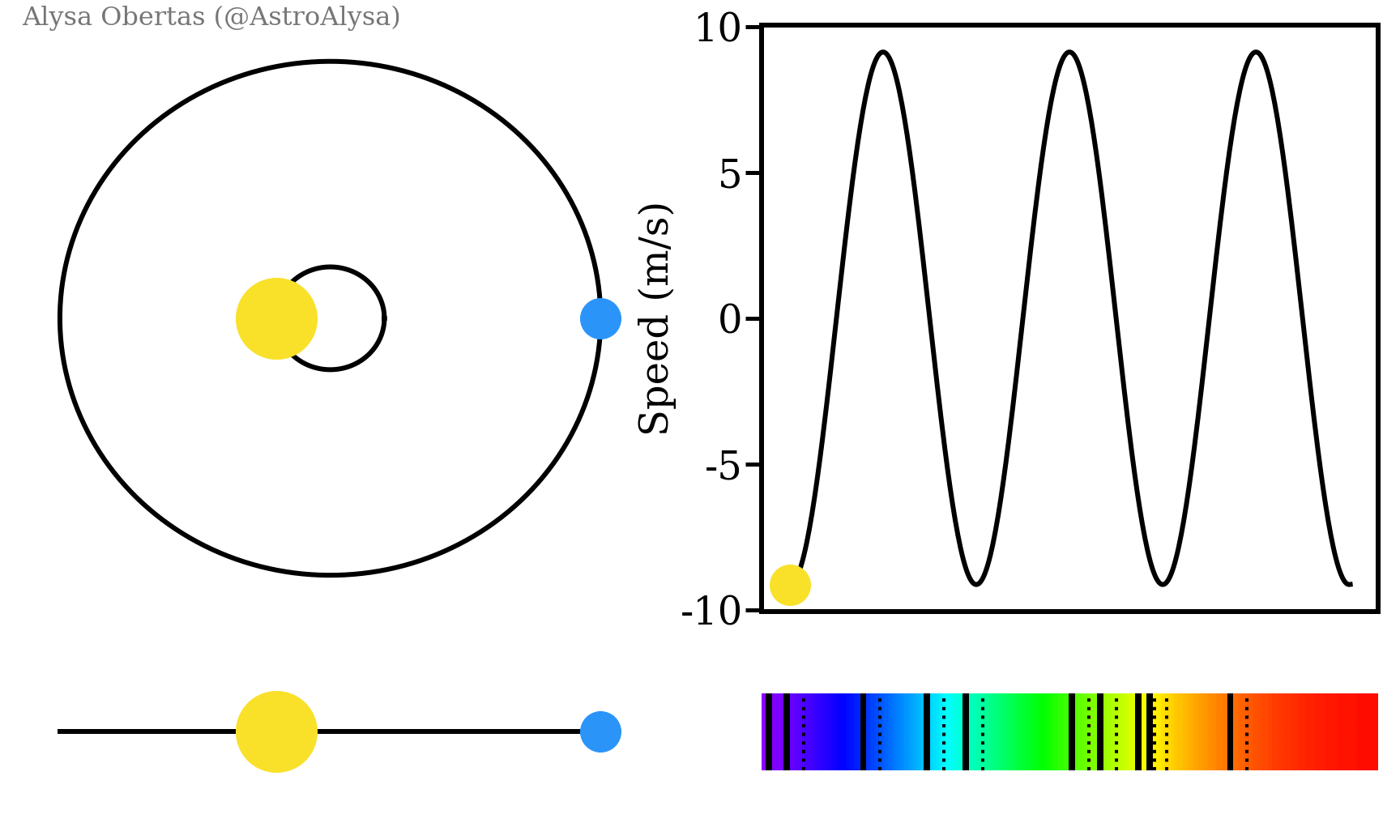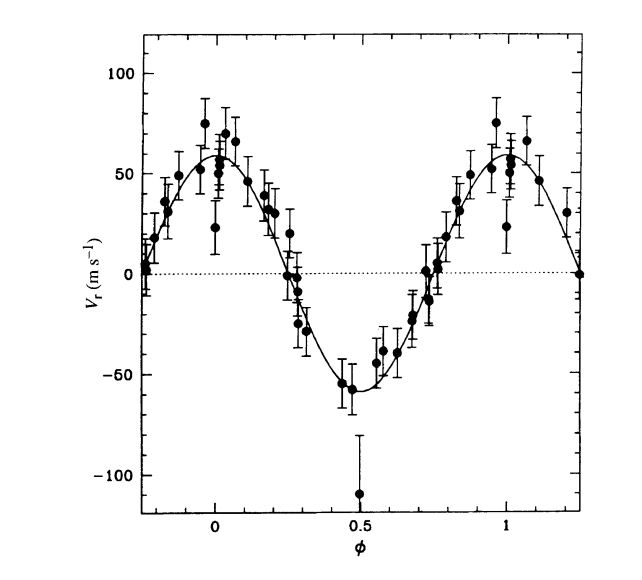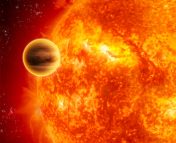Title: A Jupiter-mass companion to a solar-type star
Authors: Michel Mayor and Didier Queloz
First Author Institution: Geneva Observatory
Journal: Nature (closed access)
Last week, the 2019 Nobel Prize in Physics was awarded to three astrophysicists: James Peebles for his work on cosmology (see tomorrow’s Astrobite for more on this!) and Michel Mayor and Didier Queloz for the discovery of the first known extrasolar planet around a Sun-like star. Today, we’ll be taking a trip back in time to the original 1995 paper that started the revolution of exoplanet research.
So, what did Mayor and Queloz find, and how did they do it? Although there are many ways to find an exoplanet, this research used the radial velocity method. A star and a planet orbit each other, and although the star doesn’t move as much, the star still shows a noticeable wobble due to their gravitational tugs on each other. By observing this wobble, we can infer that there’s a planet around it, and get an idea of how big and how far away from the star that planet is. They looked at many stars in the sky, searching for exoplanets; particularly, they were looking for super-Jupiters, planets larger than the largest planet in our solar system, since they’d be the easiest to spot. Why? Because gravity depends on mass and how close the objects are to each other, so bigger, closer objects would have a larger gravitational pull — and a larger gravitational pull means a more noticeable wobble!

Through their survey, the authors found a strange object orbiting the star 51 Pegasi, something twice the size of Jupiter, but about 7 times closer to its star than Mercury is to our sun. This object is now known as 51 Peg b. It seemed puzzling that a big gas giant could form so very close to its star, since those gases need cooler temperatures (beyond the “snow line”) to coalesce and form a planet. This new object made no sense with old models of planet formation — how could a Jupiter-like planet get so close to its star?

Mayor and Queloz theorized some answers to this question, wondering if 51 Peg b was a Jupiter-sized planet that somehow moved inwards towards the star. Or, maybe it could have been a brown dwarf (an object between the size of a star and a planet, sometimes called a “failed star”) that lost some of its atmosphere due to the high temperatures from 51 Pegasi, the star it orbits. Since then, we’ve figured out it’s likely a Jupiter that formed farther away from 51 Pegasi and migrated inwards towards the star, for one reason or another.
Turns out, 51 Peg b was the first of many “Hot Jupiters” to be discovered, serving as the prototype for that class of planet. Interestingly, we’ve found a lot of these big, close-in planets because they have the largest signal (they wobble more since the gravitational pull is larger for closer, more massive objects), not because they’re that common. The most common type of planet, we know now, is actually between the size of the Earth and Neptune (known as a “mini-Neptune” or “Super-Earth”).
This detection was particularly convincing because the authors ruled out all sorts of other processes that could cause variations in radial velocity: stellar variability, spot rotation, or pulsation. Since the evidence was so strong, the authors authoritatively claimed it was the first detection of an “extrasolar planetary system associated with a solar-type star”, thus setting them on the path to their eventual Nobel.
Although other planets were discovered in the early 1990s (such as a handful found around pulsars, remnants of dead stars, and others with less convincing observations), Mayor and Queloz’s observation was the one to really kick off the excitement around exoplanets. Between the clear evidence and the fact that 51 Peg b orbits a star like our own Sun, the hunt for more exoplanets was on.
In the 25 years since that discovery, we’ve found 4057 exoplanets, and that number keeps rising (you can check the most up-to-date count on the NASA Exoplanet Archive). We have developed multiple methods for finding new planets, as well as for learning about their sizes, atmospheres, compositions, orbits, and more. We’ve taken images of forming planetary systems, found types of planets that don’t exist in our solar system (like “super-Earths” and “hot Jupiters”), and even discovered a planet around our nearest neighbor star, Proxima Centauri. Many of these planetary systems were discovered by Kepler, the planet hunting satellite, and TESS, the Transiting Exoplanet Survey Satellite, is already starting to discover more exoplanets.
Looking to the future, our exoplanet/planetary science communities have many exciting discoveries ahead as we begin to find smaller, more Earth-like worlds, really characterize these planets (even observing spectra of their atmospheres for signs of life!), and more.





There’s a typo in this paragraph:
Although other planets were discovered in the early 1990s (such as a handful found around pulsars, remnants of dead stars, and others with less convincing observations), Didier and Queloz’s observation was the one to really kick off the excitement around exoplanets. Between the clear evidence and the fact that 51 Peg b orbits a star like our own Sun, the hunt for more exoplanets was on.
“Didier” should say “Mayor”
Thanks!